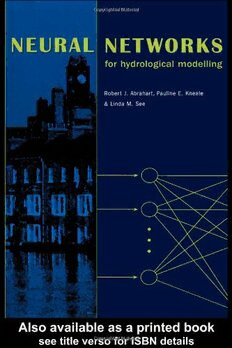
Neural Networks for Hydrological Modelling PDF
316 Pages·2004·3.484 MB·English
Most books are stored in the elastic cloud where traffic is expensive. For this reason, we have a limit on daily download.
Preview Neural Networks for Hydrological Modelling
Description:
Neural network hydrological modeling has reached the end of the beginning: strong technological barriers and steep learning curves have both been defeated - such that harder scientific questions can henceforth be tackled from an informed position of accumulated skills and reported facts. The revised challenge is thus twofold: to establish significant questions that will help push back the boundaries of science; and to exploit, or delimit, the various benefits and drawbacks that are on offer. This book is intended to ease the transition into a data-driven paradigm and to provide a stimulus for further research on neural network hydrological modeling. Each chapter is the work of one or more independent experts in a different field of hydrological modeling - which demonstrates the wide potential of such tools, for solving real world problems throughout all areas of hydrological interest, and at all levels of methodological investigation. The initial material provides a basic introduction to the concepts and technologies involved; subsequent chapters use hydrological examples and case studies to illustrate the practical application of different mechanisms and approaches. The final chapter suggests some useful research directions, based on lateral thinking and alternative strategies or mindsets.
See more
The list of books you might like
Most books are stored in the elastic cloud where traffic is expensive. For this reason, we have a limit on daily download.
